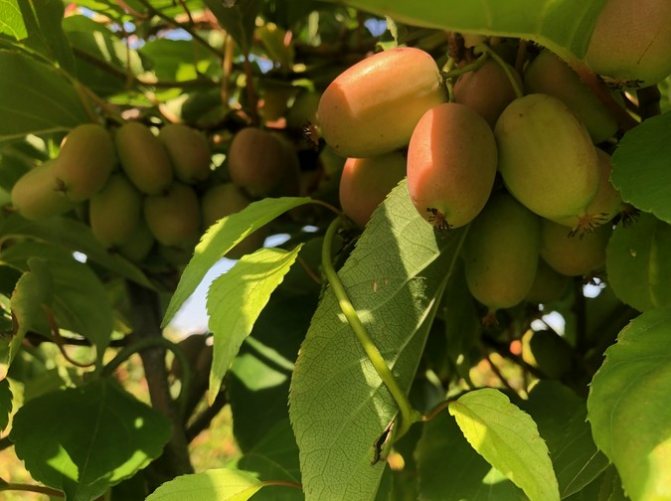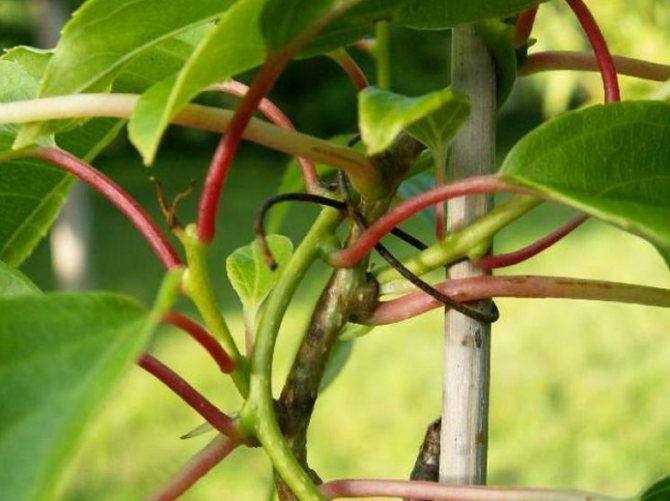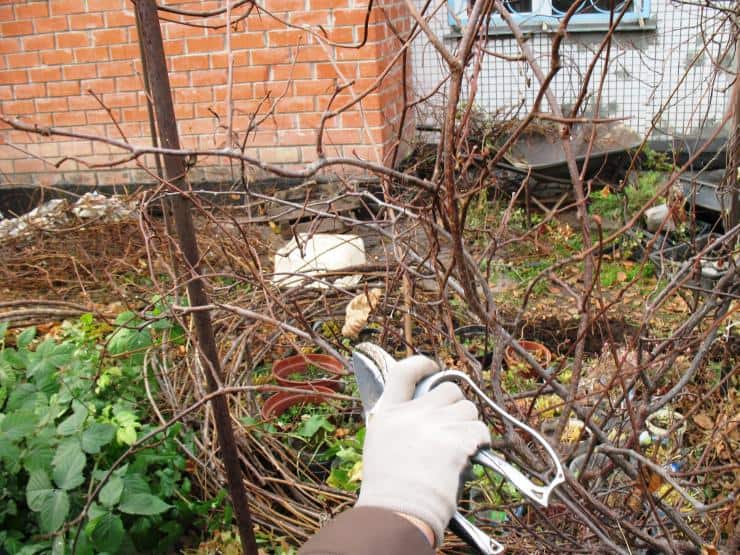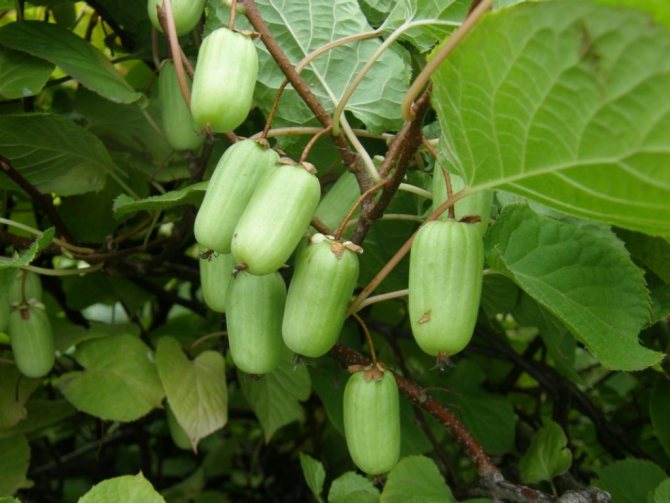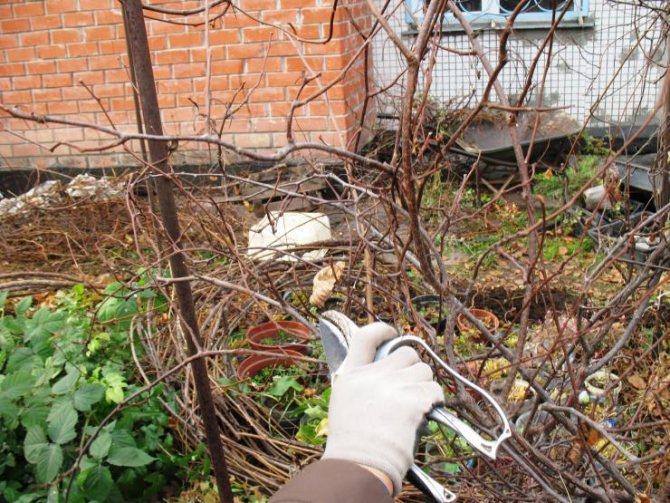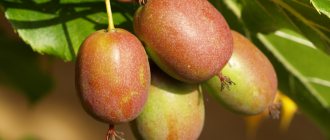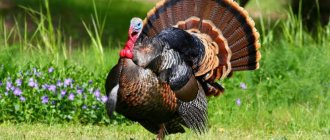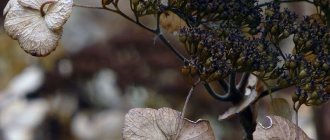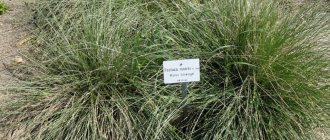If you use the actinidia plant only for decorative purposes, as an element of landscape design, or if you mask some flaws with lush foliage and powerful growth, then the plant can be left alone and almost not pruned. Only occasionally will you have to cut out frozen, dried out or damaged branches, as well as shorten uncomfortable growing and too long ones.
If you grow actinidia as a garden crop in order to obtain tasty and healthy fruits, then pruning it should become simply a necessary and mandatory agricultural technique. After planting a seedling, you need to form a strong, healthy, sparse liana from it, which will have good nutrition and lighting.
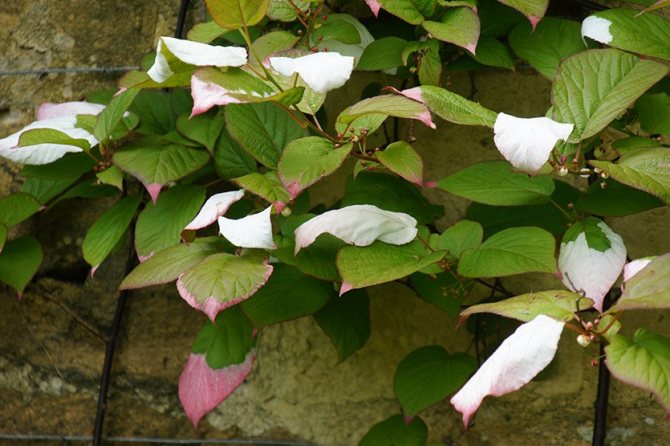
The best time to trim actinidia - this is late autumn, when all the foliage from the creeper has already fallen. If this is a young plant that has not reached the age of three years, then it will be very convenient to cut it off, remove it from the support and cover it for the winter.
Any trim starts by removing dead, damaged, weak, thin or awkwardly growing branches. You also need to remove branches frozen in winter, if you have not done this before. Twigs frozen over the winter become visible when the plant is actively growing, and such branches can also be cut off during the flowering period of actinidia or immediately after it. Do not do this in the spring (February-March) and at the end of summer, so as not to provoke the outflow of juices or unnecessary awakening of the buds on young shoots.
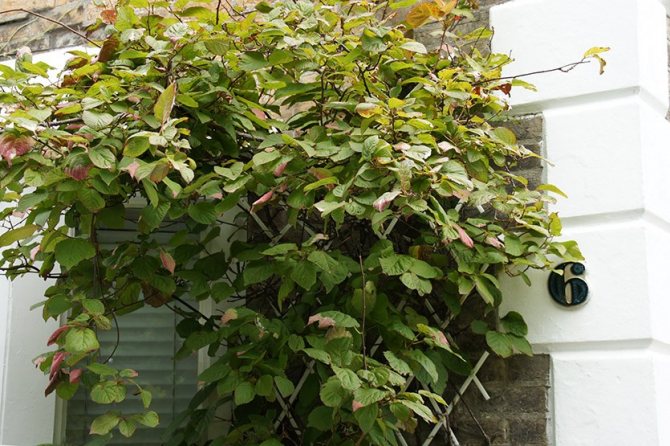

Typically, actinidia grows on a vertical, flat support. It turns out that you will be engaged in formative pruning of the plant, giving it the shape of a fan or a trapezoid expanding upward.
In the first year caring for actinidia, you need to select several strong branches (usually 3-4) and fix them on a support. All other stems are removed completely. In the fall, the remaining main branches are pruned before the mature wood begins. You can easily identify it by its appearance, it is dark brown in color.
In the second year lateral branches of the second order will begin to grow from the main branches. Of these, the strongest and most promising are also selected and fixed on the support in the horizontal direction, without blocking the access of light to each other and not thickening. In the third and fourth years, fruiting branches will begin to appear on the vine, which should be directed in the direction you need and attached to the wire or main branches.
When the actinidia bush is formed, then regular seasonal thinning is carried out and weak and dried branches are removed.
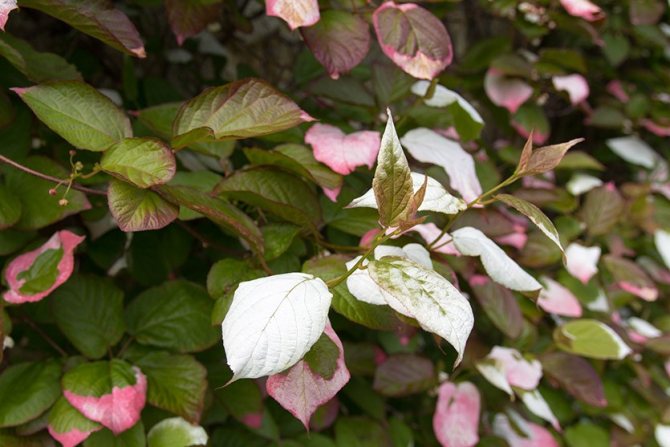

Consider the type of actinidia you are growing. In actinidia kolomikt, fruiting occurs both on generative (fruiting) short shoots, and on longer generative-vegetative (from 60 cm). Therefore, it is not worth zealous with pruning, otherwise you can stay with a small harvest.
- In fruiting actinidia, branches are cut out, which bore fruit for 3 years, replacing them with young ones. You can replace from one to three branches.
- Vegetation shoots (supporting skeletal branches of a vine with larger leaves, which are capable of growing up to 2-3 meters or more in one growing season) are shortened to the required length. Strong shortening pruning will stimulate the awakening of dormant buds and active regrowth.Take note of this point if you are maintaining the form of actinidia not on a trellis or support, but in the form of a bush.
- Cut off the generative vegetative shoots, leaving a length of no more than 30 cm. Try to distribute all the shoots remaining on the vine in such a way that all of them have enough light during the period of foliage. Lack of light can cause foliage to shed and bare the bottom of the plant. Adequate lighting will contribute to sufficient nutrition and further vitality of the fruit (generative) branches, which can survive and successfully bear fruit in smaller fruits the next year.
Read also: How often to water the lawn grass


If you are growing actinidia arguta, then it, unlike actinidia kolomikta, bears fruit only on short generative (fruit) shoots of the current year. This type of actinidia requires regular thinning and pruning of vegetative (growth) long shoots every year. And, unlike actinidia kolomikt, it is not required to replace old, fruiting shoots with young ones. It is necessary to do this in actinidia argut only if they are suddenly frozen and damaged.
Actinidia in winter. The first three years of life, actinidia creepers must be removed from the support and covered for the winter, especially if severe winters are expected. Try to cover the vine so that rodents do not have access to a cozy warm place in winter. For shelter, use fallen leaves, spruce branches or other material convenient for you, with the exception of film. It is very good if the actinidia is covered with snow from above. Shelter is usually removed in early April. Correctly and timely pruning actinidia, you will get a good harvest of fruits.
Having planted an exotic perennial liana actinidia for the first time on their site, gardeners begin to worry about its safety closer to the arrival of winter. Their experiences are quite justified: the plant migrated to our region from southeast Asia, where the climate differs significantly from the conditions of the middle zone. Therefore, in order for the vine to bloom in the spring, autumn care and preparation for winter must be done especially carefully.
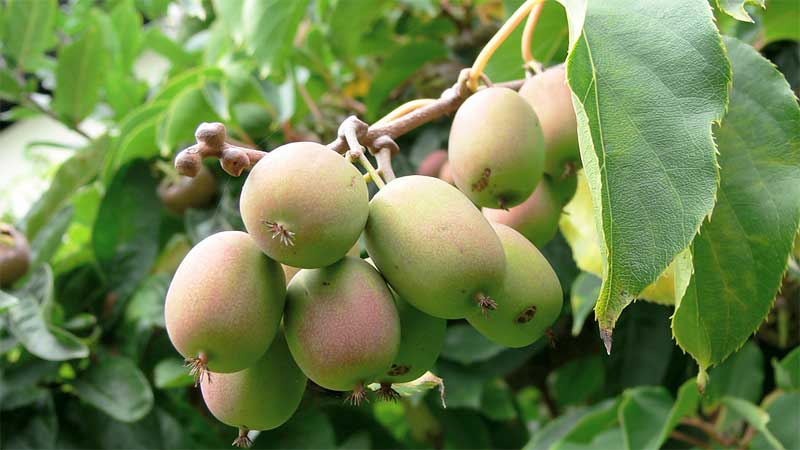

General tips for preparing actinidia for winter
The survival of actinidia in winter frosts in the Russian climate depends entirely on how well the care was carried out in the fall. To protect against characteristic diseases and prepare for cold weather, a number of mandatory measures are performed.
Watering and feeding
Actinidia belongs to moisture-loving plants, therefore, for good growth, the soil is constantly kept moist. But you can’t fill the vine. Stagnation of moisture at the roots leads to death of actinidia. Therefore, when planting vines, they arrange good drainage in advance. Watering actinidia in the fall is necessary only if there is no precipitation for a long time. Then 60-80 liters of water are spent on one vine.
For the autumn feeding of exotic actinidia, fertilizers with a large proportion of phosphorus and potassium or organic matter are used. At the same time, the near-stem circle is dug to a shallow depth. For each square meter, 2 kg of rotted manure or 15 g of potassium salt and 50 g of superphosphate are enough. You can use ready-made multicomponent preparations that do not contain nitrogen and additionally add 2 buckets of compost.
Important!
This vine has a root system located at a shallow depth. Therefore, the soil is dug to a depth of less than 30 cm so as not to cut the roots.
Autumn pruning
A haircut in the fall is performed taking into account the variety of vines. For actinidia that produce fruits only on short branches, the crown is trimmed more intensively to stimulate fruiting. Other varieties, on the other hand, form berries on long strings, so even low pruning lowers yields.
In the process of pruning, the structural features of actinidia are taken into account. Vines have three types of shoots:
- vegetative, not participating in the formation of fruits;
- on vegetative-generative berries are formed only at the ends of the branches;
- on the lateral shoots of a generative nature, the main crop is formed.
When pruning, in addition to determining the type of branch, take into account that the berries are tied only on annual branches.
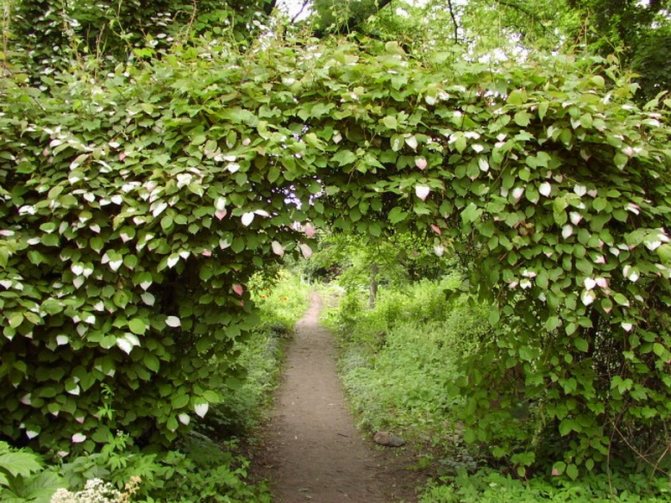

The need for pruning
With the onset of autumn, knowledgeable gardeners begin pruning exotic liana. Failure to do this will cause problems with plant development and reduce yields.
Pruning actinidia is needed to:
- the crown was not too thick;
- improve resistance to disease;
- stimulate the growth of young shoots;
- improve productivity;
- give the vines a more attractive look.
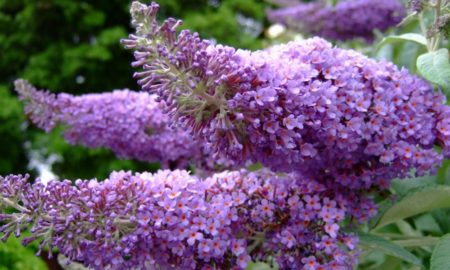

You may be interested in:
Winter Budleia care: how to cut, insulate, features of the autumn transplant The homeland of the lush budleya is China. Although this exotic plant has adapted to the harsh Russian ... Read more ...
Pruning time
You can trim actinidia when there is no sap flow. The most suitable time for this procedure is late autumn, when the plant has already shed its foliage, or early spring, before the buds have swollen. If you tighten up with pruning until April, when sap flow begins, unhealed wounds will remain in the places of the cuts and the plant may die.
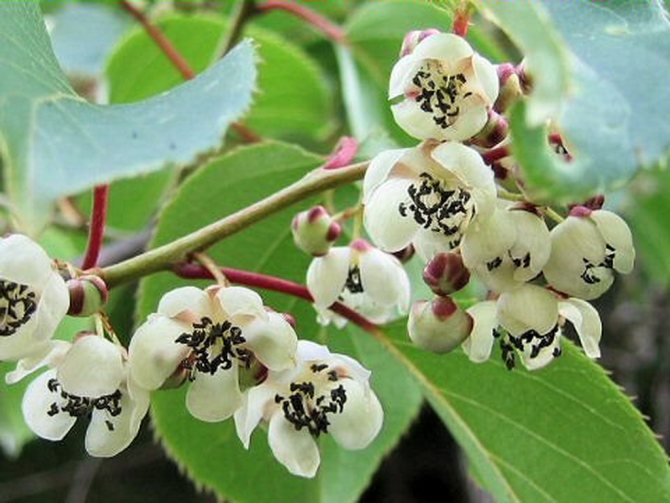

In the fall, pruning is performed after the completion of leaf fall and the establishment of constant subzero temperatures at night. Usually this time falls in October or November, depending on the climatic zone.
Important!
Actinidia cannot be cut off earlier than the specified time, until the sap flow has ended. This can provoke the death of the plant.
Correct pruning technology
Actinidia is a fast growing plant. Therefore, she needs regular pruning to prevent thickening of the crown. This procedure increases the immunity of the vine against the disease and enhances survival in the winter cold.
Pruning actinidia in the fall is performed in the following order:
- All shoots with damage, signs of illness or drying out are cut off, leaving two living buds.
- Branches that bear fruit within three years are also cut off, replacing with younger ones. In this case, the age of the shoot is determined by the shade of the bark.
- The vegetative branches are shortened to a length of 50 cm.
- Old shoots that do not give a large number of fruits are cut into a ring.
- In subsequent years, the crown is simply thinned out and damaged branches are removed.
If this instruction is followed correctly, even beginners can handle actinidia pruning. As a result, the plant gives a good harvest and becomes decorative.


Pruning
The plant will tolerate the cold much better if timely pruning of the shoots is carried out.


It is important to remember a few basic rules:
- Not all branches of a plant are the same. Some of them serve to secure actinidia on the support, others are intended for the formation of fruits. Depending on the type of shoot, the degree of pruning will also differ.
- Not all actinidia varieties tolerate pruning equally well. For the Argut variety, short shoots are most acceptable. So the plant bears better fruit. But Poligama or Kolomikta can sharply reduce their yield after shortening the branches.
- The optimal pruning time is spring or late autumn. During this period, the plant is out of the active growth phase and will undergo the procedure much more calmly.
In some videos, it is noted that if the shoots are not shortened in the fall, this is likely to negatively affect the condition of the vine. For example, a plant may become overgrown.


This, in turn, will complicate its care and lead to the appearance of many dry branches, practically devoid of fruits and leaves. Actinidia will become vulnerable to pests and diseases, in addition, it will look unattractive.
How to properly prune actinidia in preparation for winter? First, you need to determine which branches require care. This can be done in the fall, a couple of weeks before the onset of cold weather.


Examine the plant to see where the woody stems end and where the fresh, "nil" stems begin. The latter should be shortened by about two times.
- Cut off any branches that had fruit. They will be practically useless for the next year.
- Extra young sleeves should be removed. This is the name of the shoots coming from the base of the bush.
- Cut off old and diseased branches. It is quite simple to determine that a branch is old: there will be no young shoots on it.
It should be remembered that shoots of the first (young branches about 50 cm long) and second (young fruit shoots) order cannot be pruned. Low-growing varieties are also not subject to molding.
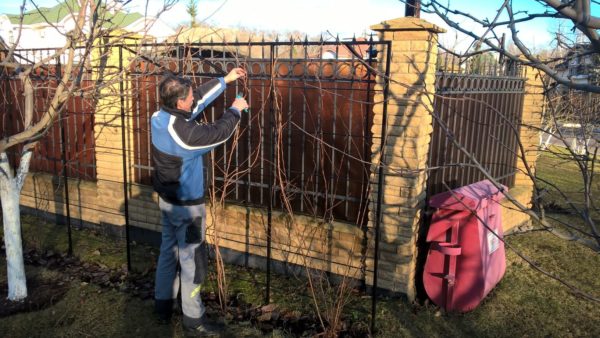

Cut vines are laid on the ground, tied and pinned to the ground. It is very important to fix the stems, otherwise there is a high probability of branches breaking under a layer of snow.
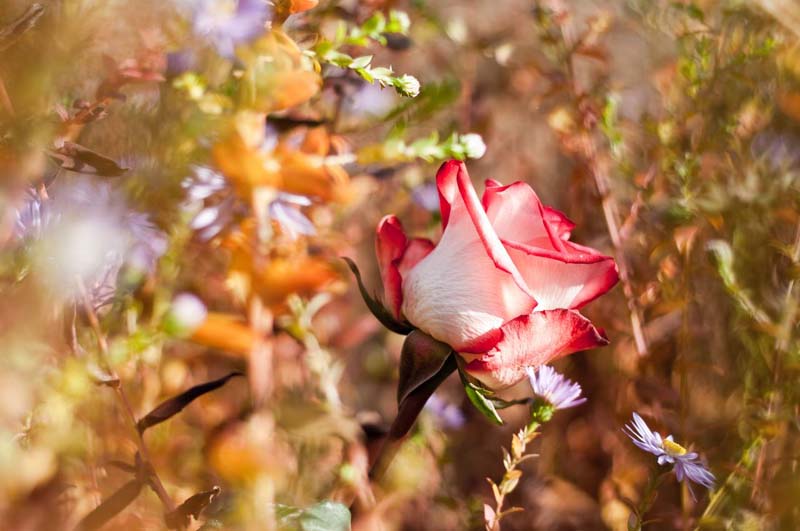

Shelter for the winter
Most species of actinidia are thermophilic and do not tolerate winter cold. Therefore, in our country, actinidia kolomkita is more often grown, which can withstand a drop in temperature from -23 to -35 degrees without additional protection. The rest of the varieties are less common and their cultivation in the conditions of the Russian winter is impossible without additional shelter.
Regardless of the varietal affiliation, young vines are sheltered, the age of which is no more than 2-3 years. This is due to the close occurrence of the root system to the surface. In addition, the bark on the shoots of young plants is very thin and is not able to protect well from frost. Adult actinidia are sheltered as needed, focusing on climatic conditions and the type of vines. To do this, mulch the soil and cover the lower part of the trunk.
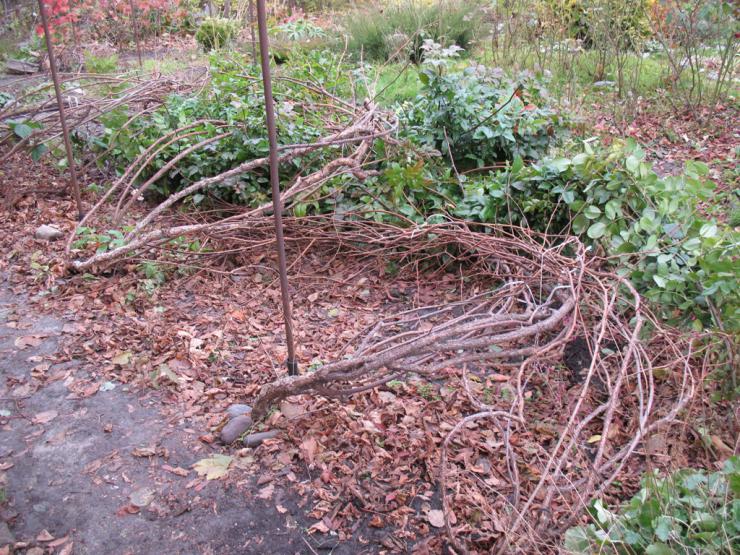

Material selection
For the shelter, special agrofibre or suitable natural materials are used. To protect the shallow root system from the cold, the peri-stem circle must be mulched with suitable organic material: fallen leaves, straw, coniferous spruce branches or sawdust. For greater efficiency, it is recommended to combine several types of shelter. For example, the soil is covered with straw or sawdust, and coniferous spruce branches are fixed on top, which protects the natural material from being blown out during strong winds and traps snow.
Industrial nonwovens have recently come into use. Due to their properties and convenience, they quickly gained popularity:
- they do not change their properties under the influence of temperature fluctuations and atmospheric precipitation;
- good air and moisture permeability;
- do not rot or mold;
- resistant to mechanical abrasion;
- durable.
Important!
There are many varieties of agrofibre on sale with different technical characteristics. For the cover of actinidia, material with a density above average is more suitable.
Shelter order
Work on warming vines begins after the end of the leaf fall and the establishment of cold weather. First, the roots are covered with mulch. To do this, in a near-stem circle with a radius of 50 cm, mulch the earth with a suitable natural material. Then the vine is untied from the support, folded into a neat bundle and laid around the trunk. To save actinidia from the invasion of rodents, poison from mice or bunches of dried dog mint is spread around it. Then the liana is completely covered with sawdust or fallen leaves and covered with coniferous spruce branches.
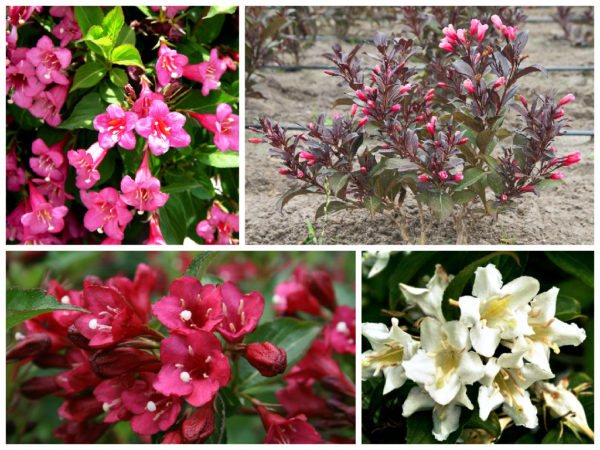

You may be interested in:
Weigela care in autumn: preparation for winter Weigela is a beautifully flowering perennial shrub from the genus Honeysuckle. The homeland of this plant is the southeastern ... Read more ...
To protect against severe frosts, agrofibre is additionally used. The liana collected in a bunch is wrapped with it several times and only then mulch and spruce branches are laid.Adult actinidia varieties that need insulation for the winter are partially closed. To do this, mulch the earth and cover the trunk with natural material to a height of 20 cm, and spread spruce branches on top.
Important!
During long thaws, actinidia is slightly opened so that it does not rot.
The final shelter is removed in April. But if there are frequent return frosts in the region, the plant is wrapped in spandbond or lutrasil to protect it from freezing.
Description of culture
Actinidia is a thermophilic tree-like perennial plant of the Actinidia family. Its main decorative component is graceful, thin shoots and leaves of a heart-shaped configuration. During the summer period, they change their hue from white-green to pink-crimson. Such an unusual color allows you to actively use the culture for decoration:
After flowering, juicy, sweet fruits are formed, they are somewhat reminiscent of gooseberries in shape.
Since the shrub requires a lot of heat, it must be properly prepared for the upcoming winter. The process is carried out taking into account the type of vine that was planted. Usually this is Actinidia Kolomikta, because this is the most winter-hardy crop variety that can calmly withstand a temperature drop of up to 35 degrees below zero.
Actinidia Poligama and Arguta are less common, since they can freeze slightly without additional plant preparation. It includes:
- pruning;
- shelter of the ground part of the vine and its root system.
Preparing for winter in different regions
Winter weather in different regions of Russia is different. This must be taken into account when closing adult vines for the winter. In the Moscow region and in the middle lane, the winter-hardy actinidia kolomkita for the winter can not be closed. For other varieties, a mulch shelter is arranged, and coniferous branches are fixed on top.
In the Volga region, liana is laid on a prepared mulch pillow. Sawdust or fallen leaves are poured on top and covered with agrofibre or roofing material. To protect against mice and other rodents, poison is spread nearby.
In the harsh Siberian climate and in the Urals, all varieties of actinidia are completely closed for the winter. To do this, the liana collected in a bunch is laid on a layer of mulch and covered with old rags or rags. Polyethylene is placed on top and a layer of soil 20 cm thick is poured.
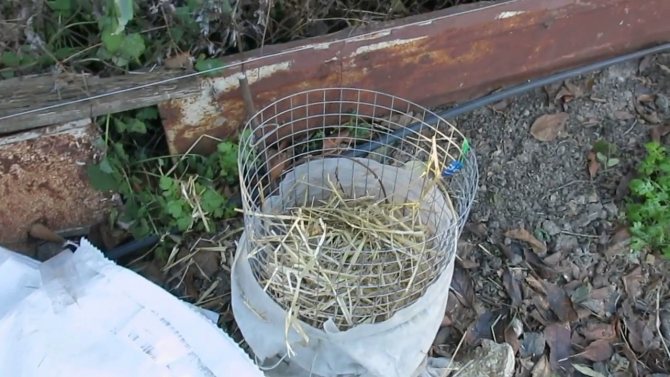

To achieve a large harvest of actinidia, we learn to properly care for it
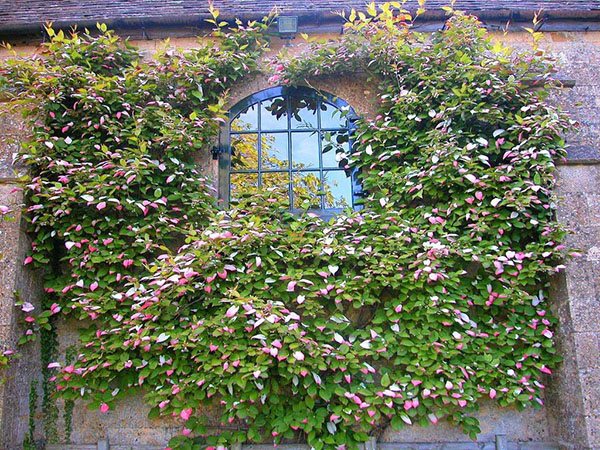

Actinidia is becoming more and more popular in garden stores, the cultivation and care of which is very simple, and the result is pleasant. From a bush, you can collect at least 20 kg of delicious fruits, depending on age. What is it? In order not to be verbose, let's say that one of the varieties of this plant is kiwi. So what should be like caring for a miraculous relative to get a big harvest?
Possible mistakes
Gardeners do not always perform the preparatory work correctly. This leads to damage or death of the vine. The main mistakes are:
- Performing autumn pruning according to the same pattern for all varieties. This leads to a deterioration in yield or a complete lack of fruit. The plant stops growing or dies completely.
- Closing the vine too early, as well as performing the work late, causes the death of the plant.
- Pruning during sap flow leads to the fact that the damage does not heal for a long time and the vine dies.
Pruning actinidia in fall, spring and summer: when and how to prune
Due to the fact that actinidia very quickly grows shoots, in order to prevent a strong thickening of the crown and attack on neighboring plants (if located close), the vine will need to be cut periodically.
In actinidia, only the "excess" is cut off. If the vine does not interfere, then there is no need to cut it!
Also, the plant trimmed regularly when shaped
(usually 3-4 sleeves, like grapes).
Actinidia bears fruit, as a rule, on 3-year-old wood, on the sleeves, like grapes, which means that the shoots need to be periodically rejuvenated and cut (shaped).
It is believed that the optimal time for pruning actinidia occurs in early spring, when the plant has not yet woken up, i.e. before the beginning of the growing season.
However, some gardeners, on the contrary, are of the opinion that the main pruning of actinidia should be carried out precisely in late autumn, after leaf fall.
Video: pruning actinidia
Autumn pruning
As soon as stable subzero temperatures are established at night, and the vine begins to shed its leaves, you can start autumn pruning.
Depending on the weather of the climatic zone where actinidia is grown, autumn pruning is carried out in October-November.
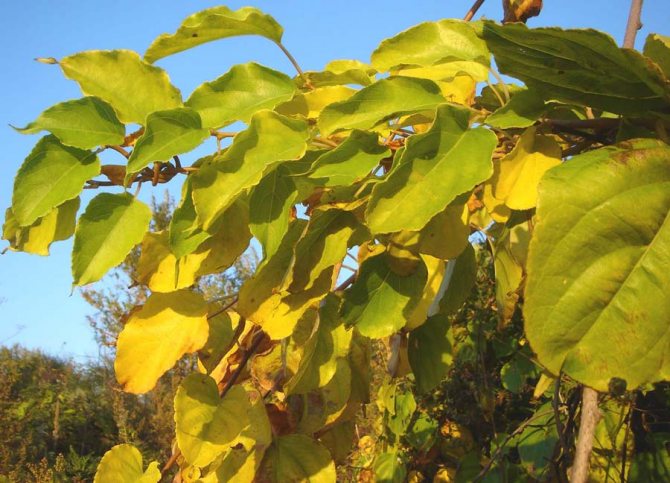

What to prune in the fall?
It is necessary prune all unripe shoots (green)shortening them to ripe (brown).
Also held sanitary pruning of dried shoots (pruned to healthy wood).
Pruning in spring
It is advisable to prune actinidia even in winter, so that the trimmed ends of the plant have time to heal before spring, otherwise it will "cry" very much.
If a full spring (thaw) in your region begins only in April, then pruning should be done in February-March.
If we draw parallels, then, for example, actinidium Argut, grown and pruned similarly to grapes.
So, in the spring, branches that have dried up (sanitary pruning) and branches that literally choke others should be cut (this happens very often, and something needs to be done about it).
Summer pruning
If you want to get the maximum yield, then in the summer you will need to prune the creeper in order to rid it of unnecessary thickening shoots. Such a pinching including will speed up their maturation (carried out similarly minted grapes).
Correct fit
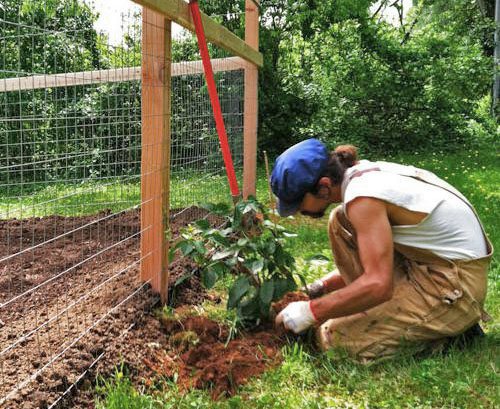

Caring for actinidia in the spring requires proper planting. The plant is undemanding to the soil. In its natural environment, it grows in soil with a low content of phosphorus and nitrogen. Alkaline and clay soils are completely unsuitable. Acidic, slightly acidic, at least neutral are preferred. This explains the impossibility of using lime as fertilizer. It is preferable to plant plants in the spring, but it is also possible in the autumn 2-3 weeks before frost.
Autumn planting is carried out only for plants of 2-3rd age.
For planting, dig holes 60 * 60 cm, putting 10-15 cm of drainage in them (pebbles, expanded clay, crushed stone). Rich soil is added to each hole, mixing 2-3 tbsp. wood ash, 10 kg of humus and 0.15 kg of superphosphate.
It is strictly forbidden to add lime or manure!
As soon as the earth settles, they begin to plant the plants, having previously poured a pile of soil that does not contain fertilizer into the hole, on which the seedling is placed. There should be a distance of 1.5-2.5 m between the bushes. After planting, the seedlings are watered (about 2-3 buckets per unit), lightly crush the ground so that the root collar is flush with the ground. Top mulch with peat, sawdust, compost, pine bark.
Supporting the plant upright


After planting, it is immediately necessary to install supports for actinidia (frames, trellises) - two-meter concrete or wooden, between which a wire is stretched in 3-4 rows. Orient the support frame from east to west. At the same time, plants are placed on the south side, forming on a support in the form of a ridge or fan.
Reproduction
If you started growing a plant, then sooner or later you will be interested in how to propagate actinidia. The breeding process is quite simple, so the gardener can independently grow both male and female specimens. In this case, the sex and characteristics of the variety are inherited from the parent to the child (except for the use of the seed method).
Arc layering method
At the end of the spring sap flow and the blooming of young foliage, the longest and most well-developed growth shoot is chosen, tilted down with the top and attached to the ground, sprinkling the pinning site with a 10-15 cm layer of soil. The hill should be watered and mulched with sawdust or humus.
In the fall or spring of next year, the layers and the mother bush are separated, and the baby is transplanted to a permanent location.
Cuttings
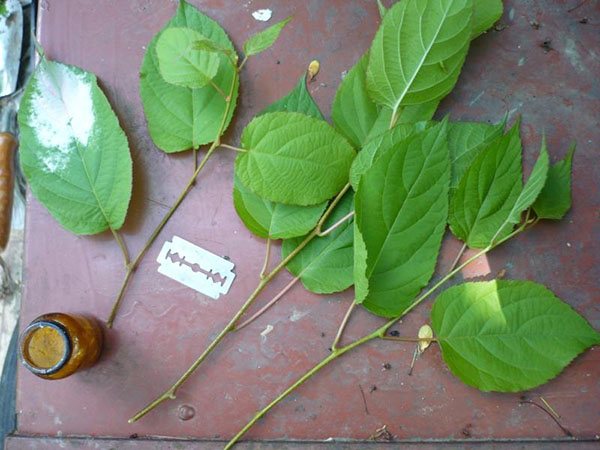

Often, gardeners are interested in how to propagate actinidia by cuttings in the spring. This is done in two ways.
Cuttings with green shoots
With the onset of June, several strong one-year-old twigs 0.5-1 m long are chosen, cut in the morning and immediately placed in a jar of water to prevent wilting. Each twig is divided into 10-15 cm fragments and planted in soil (slightly acidic or neutral), into which humus and river sand have been previously introduced in a ratio of 1: 2, as well as a chlorine-free mineral complex fertilizer (100 g is enough for 1 m²) ...
Planting is carried out at an angle of 60º, keeping a distance of 5 cm between cuttings and 10 cm between rows. In this case, the middle bud on the twig should be located at the level of the soil. Around the cutting, the soil is tamped, watered, and a two-layer gauze is laid on top, which is removed after 2 weeks.
Before the onset of winter, the cuttings are hidden under fallen leaves, and in the spring, until the foliage has blossomed, they are transplanted to a permanent place of growth.
Lignified cuttings method
According to this technique, the reproduction of actinidia is carried out as follows. Lignified cuttings are cut in late autumn, tied in bunches and stored vertically until spring in a box filled with sand at a maximum of 1-5 ºC. Planting is carried out in a greenhouse and watered every two days. They are looked after like green cuttings.
Seed method
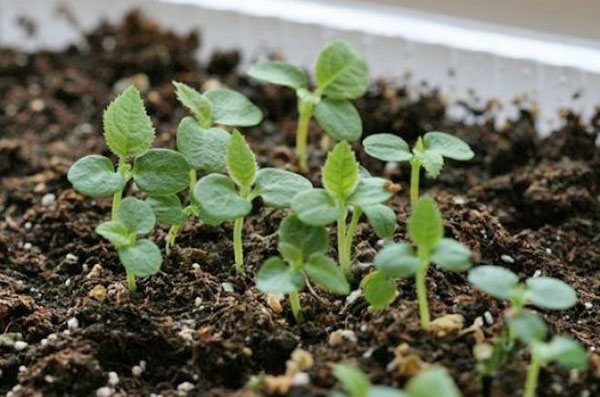

After kneading the ripe whole fruits, and then washing, the resulting seeds are dried on paper in the shade. Then, in the first decade of December, they are soaked for 4 days, flooded with 2 cm of water, stratified and sown 0.5 cm deep into containers filled with a mixture of turf soil and river sand.
Seedlings should be sprayed and protected from direct sunlight. After the appearance of 3-4 leaves, the young are transplanted into a greenhouse. Flowering occurs upon reaching 3-5 years of age, after which the plant is transplanted to a permanent place in the ground.





